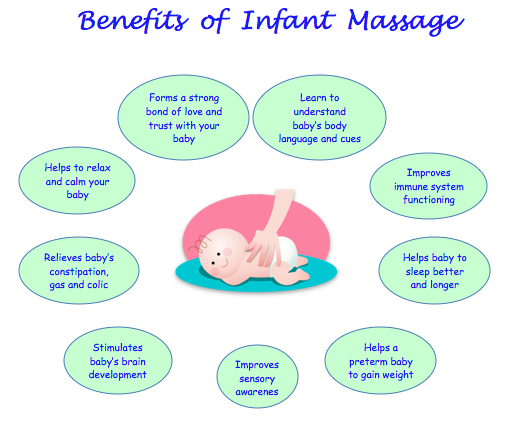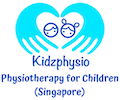Baby / Infant Massage

Baby's Cues: How to know if your baby is ready for massage?

Your baby is ready for a massage session when he displays relaxed cues. That means your baby is quiet and alert, either looking at parent or something else, and have regular, relaxed breathing, with a relaxed body.

Your baby is saying "NO" to massage when he displays stressed cues. Your baby may hiccup, yawn, sneeze, gag, spit up, grimace, hold up a hand or hand covering face, splay or fist his fingers or toes, close eyes or hyper-alert state (stare, wide eyed), look away, colour changes, changes in heart rate, cranky, or have a distressed look on his face.

Suitable Oils for Baby Massage
The purpose of the massage oil is to reduce friction and allow the massage strokes to be smooth.
- Any vegetable oil may be used.
- Cold pressed and organic
- Try a patch test on the baby
- The oils should be warmed in parent’s hands before they are applied to the child's skin.
AVOID:
- Oils with chemicals and perfumes.
- Synthetic or mineral oils which are petroleum-based.
- Essential oils are not recommended.

Massage Conditions and Environment
Warmth: Keep room slightly warm
Low noise: Minimise noise, distractions and interactions. A quiet room is best. Parents are encouraged to talk and to sing to their child.
Comfort: Baby positioned comfortably with head relaxed on a pillow.
Consistency: Massage done on a regular basis. Consistent day/time for massage.
Rhythm and routine: Use gentle but firm pressure. Strokes should be long, slow and rhythmic.
Massage video on the tummy massage strokes for babies suffering from wind, constipation or colic:
If you would like to learn the full body infant massage strokes, please reach out to us. Our therapist is an internationally certified infant massage instructor, who is keen to teach parents more about infant massage.
Small group classes may also be arranged with our therapist.
Let's get in touch
